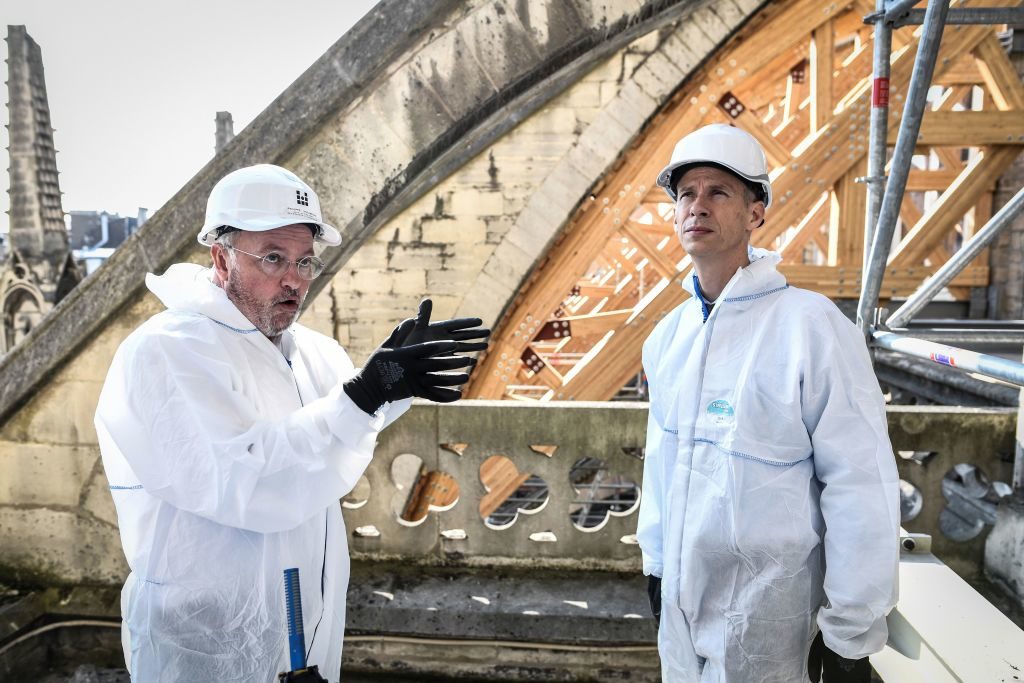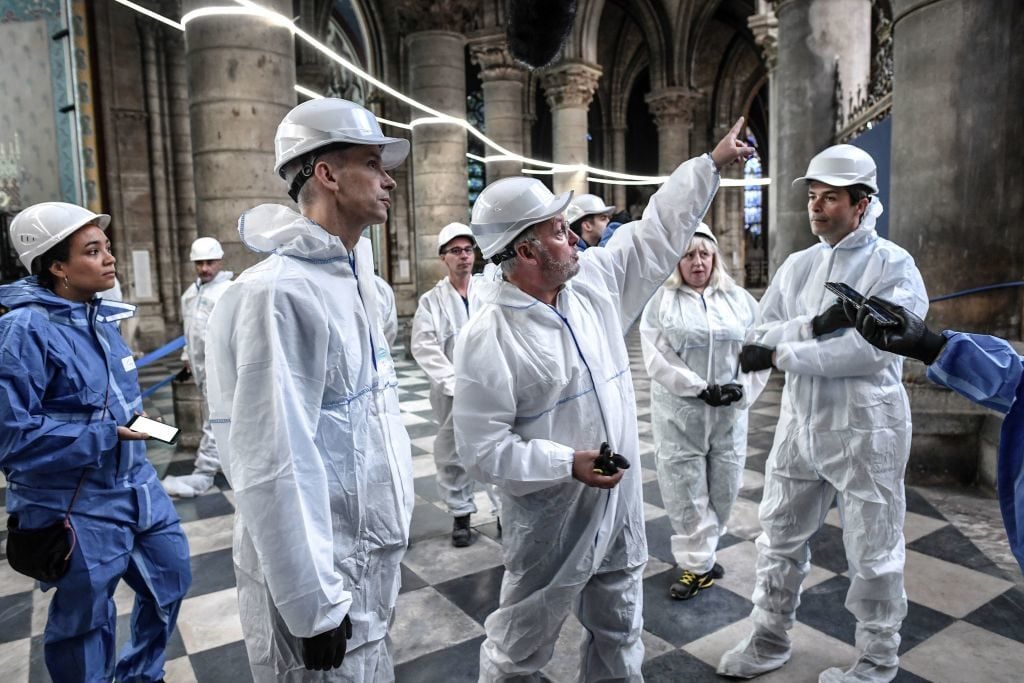Art World
Notre Dame Is at Risk of Further Collapse as a Heatwave in Paris Lifts Temperatures to Record Levels
The chief architect behind the cathedral’s restoration worries that the heatwave may cause the vaults to cave in.

The chief architect behind the cathedral’s restoration worries that the heatwave may cause the vaults to cave in.

Naomi Rea

The chief architect of the operation to restore Notre Dame is anxious that a record heatwave in France could cause the vaults of the historic cathedral to collapse.
Efforts have been underway to fortify the building since a large part of the roof and the cathedral’s spire was destroyed in a devastating fire on April 15. Three months on, as temperatures soar to record levels in Paris, Philippe Villeneuve told French media that he is concerned about the stability of the cathedral’s vaults.
“My worry is that the masonry joints, by dint of drying, will lose their coherence, their cohesion, and their structural integrity, and paf!, the vaults may fall,” Villeneuve explained to Euronews.
He was speaking as temperatures are forecast to hit a record 42°C (107.6°F) in Paris. The capital and 20 departments across northern France have been placed on high alert because of the heatwave.
Notre Dame’s already weakened structure is being closely monitored, but some parts of the vaults have yet to be consolidated. Experts working to secure the cathedral have been unable to reach them from any direction.
The vaults have been stable since firefighters extinguished the flames but Villeneuve, who is overseeing the project as the lead architect of France’s national historic monuments, warns: “[They] could still collapse at any moment.”
“The main danger lies in the combined action of heat and the water currently trapped inside the walls and vaults,” Nikolaos Karydis, who is a senior lecturer and expert in architectural conservation at the University of Kent, explains to artnet News.

The head architect of France’s historic monuments, Philippe Villeneuve (center) shows France’s culture minister the damage caused by the fire at Notre Dame. Photo by Stephan de Sakutin/AFP/Getty Images.
The water inside the vaults is a combination of what was sprayed by the firefighters to combat the blaze, and rainwater that has since penetrated the structure after the collapse of the roof. “Due to the heatwave, this water is drying faster than we could predict,” Karydis says. “Quick drying leads to rapid crystallization of salts dissolved in the water and trapped in the walls. As these salts crystallize they expand, eroding the mortar and stones of walls and vaults. This unprecedented heatwave is expected to accelerate this process causing the cracking of the vaults before their temporary consolidation is complete.”
While Karydis says that it is difficult to predict the likelihood of collapse, the threat must be taken seriously due to the “extreme significance” of the building.
“A good short-term response would be to accelerate the propping up of the vaults with temporary scaffolding,” he says. “In the long run, the remaining structure should be protected from the rain water and monitored to determine the right repair method.”
The reconstruction work on Notre Dame is slated to take five years, after the French president Emmanuel Macron made a speech vowing that by 2024 the cathedral would be rebuilt “even more beautiful than before.” Experts have argued that it will likely take longer than that, however.
A debate has raged in France over how the historic monument should be restored to its former glory and whether to rebuild the spire exactly as it was first designed by Viollet-le-Duc in the 19th century. Others have suggested a contemporary spire. Artists Wim Delvoye and Studio Drift and the architect Norman Foster were among those who put forth radical proposals for a different look to its historic spire after the French prime minister put out an open call for ideas. But those contemporary dreams were crushed at the end of May, as France’s senate voted to rebuild the edifice as closely as possible to its appearance before the fire.